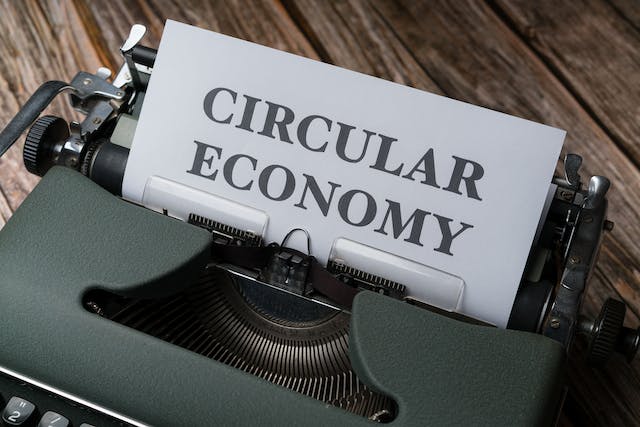In an era where environmental consciousness is at the forefront, the Circular Economy Club (CEC) emerges as a beacon of change, spearheading the global transition towards a circular economy. With over 260 local chapters across 110 countries, this non-profit organization envisions a world where cities function through sustainable, circular models, marking the end of the age of waste. Let’s get into the fundamentals of the circular economy and why it’s so important.
What is Circular Economy?
At its core, the circular economy is a holistic approach to resource management that seeks to create a closed-loop system. The concept of a circular economy is gaining momentum worldwide. Instead of discarding products after use, materials are kept in circulation for as long as possible, either by being repaired, repurposed, or recycled. This shift from a linear to a circular model not only reduces the strain on finite resources but also minimizes environmental impact by cutting down on waste generation and pollution. The concept can be a game changer for our economy.
Key Principles of the Circular Economy
- Design for Durability and Recyclability: Products are designed with longevity and recyclability in mind. It ensurs they can be easily disassembled and repurposed at the end of their lifecycle.
- Resource Optimization: By keeping resources in use for longer periods through strategies like sharing, leasing, and remanufacturing, the circular economy maximizes resource efficiency.
- Waste Elimination: Waste is seen as a valuable resource rather than a burden. Through processes like composting, recycling, and energy recovery, waste is repurposed to create new products or generate energy.
Key Features of a Circular Economy
Waste Reduction
In a circular economy, the focus is on designing products with longevity in mind. This helps reduce the generation of waste by extending the lifespan of products and materials through repair, refurbishment, and recycling.
Resource Efficiency
Circular economies prioritize the efficient use of resources, aiming to extract maximum value from products and materials before considering disposal. This not only conserves natural resources but also minimizes the environmental footprint associated with resource extraction.
Product Life Extension
The concept of planned obsolescence takes a back seat in a circular economy. Instead, the emphasis is on designing products that are durable and can be easily upgraded or repaired, thus extending their lifespan and reducing the need for constant replacements.
Closed-Loop Systems
Circular economies promote closed-loop systems where materials are continually recycled and reintegrated into the production process. This minimizes the demand for new raw materials and reduces the overall environmental impact of resource extraction.
Benefits of the Circular Economy
Environmental Sustainability: By minimizing resource extraction, reducing waste, and lowering carbon emissions, the circular economy helps mitigate environmental degradation and combat climate change.
Resource Conservation: Through efficient resource management and closed-loop systems, the circular economy conserves valuable natural resources, such as water, minerals, and fossil fuels.
Economic Resilience: Embracing circular practices fosters innovation, creates new job opportunities, and enhances economic stability by diversifying supply chains and reducing dependency on volatile raw material markets.
Social Impact: The circular economy promotes social equity by ensuring fair access to resources, fostering local community engagement, and empowering marginalized groups through inclusive business models.
What is the Circular Economy Club (CEC)?
CEC stands as a driving force behind the transformative shift toward a circular economy. Since its inception in 2013 by Anna Tarí, the club has grown exponentially, fostering a global community of circular economy professionals and organizations. In 2019 alone, the CEC boasted 5,500 members in 150 countries, showcasing its influence and reach.
CEC Programs
The success of the CEC can be attributed to its three core programs: CEC Chapters, CEC Mentors, and CEC Global Events. The Chapters program empowers circular leaders to bring sustainable practices to life in their cities, universities, hubs, and companies. The Mentors program connects experienced members with promising talent, providing free advice to nurture the next generation of circular thinkers. Lastly, the Global Events program allows members to collaboratively address local and global challenges, fostering innovation and shared solutions.
In 2019, it received recognition as a United Nations Young World Champions of the Earth Finalist, emphasizing its commitment to environmental stewardship.
CEC’s evolution is a testament to its commitment to driving change. From its humble beginnings in 2013 with 100 members in 10 countries to its current status as a global force with over 5,500 members, the club has continuously adapted to meet the growing demand for sustainable solutions. The launch of the CEC website in 2018, allowing member interaction and information sharing, marked a pivotal moment in the club’s digital presence.
CEC’s Impact on Industries
Individual and organizational members of the CEC represent a diverse range of sectors, including design, engineering, research, and strategy. Profiles like Alexandre Lemille from Wizeimpact, Ladeja Godina from Circular Change, and Beatriz Luz from Exchange 4 Change Brazil exemplify the wide-ranging expertise that fuels the club’s impact on circular cities, energy, fashion, food, and manufacturing.
Awards and Recognition
The CEC’s dedication to driving change hasn’t gone unnoticed. Awards such as the Iberoamerican Youth Organization Winner (2018), the United Nations SDGs Awards Finalist (2018), and the Global Game Changers Awards Finalist (2018) underscore the club’s global impact. These accolades not only celebrate the CEC’s achievements but also inspire and motivate its members to continue pushing boundaries.
Conclusion
The circular economy emerges as a beacon of hope for the word economy. Its sustainable practices, waste reduction strategies, and resource efficiency not only benefit the planet but also contribute to economic prosperity. As the Circular Economy Club continues to shape a sustainable future, its impact reverberates globally.
From its humble beginnings to becoming the largest international network of circular economy professionals, the CEC stands as a testament to the collective power of individuals dedicated to positive change -in 2024. With statistical evidence, industry collaborations, and a commitment to sustainability, the CEC paves the way for a circular global economy, setting the stage for a future where waste is a relic of the past.
READ MORE : Why AI Big Data Really Matter To B2B Companies



